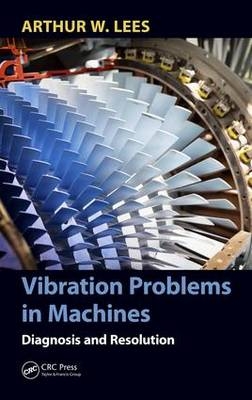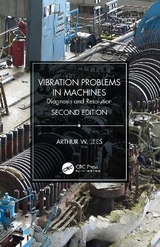
Vibration Problems in Machines
Productivity Press (Verlag)
978-1-4987-2674-0 (ISBN)
- Titel erscheint in neuer Auflage
- Artikel merken
Covering a wide range of techniques required in the monitoring, analysis, and diagnosis of operational rotating machinery, this text:
Discusses topics ranging from the presentation of complex data to methods for reconciling model and plant data
Describes the physical basis of fault signals as well as the necessary signal and data processing techniques
Delivers fresh insight into misalignment phenomena and the future of smart machinery
Vibration Problems in Machines: Diagnosis and Resolution includes case studies with real plant data, MATLAB® scripts and functions for the modelling and analysis of rotating machines, end-of-chapter questions, and a solutions manual with qualifying course adoption. The book provides an invaluable resource for those seeking to optimize the use of complex and often apparently contradictory data.
Arthur W. Lees, BSc, PhD, DSc, CEng, CPhys, FIMechE, FInstP, LRPS, joined the Central Electricity Generating Board, London, UK, after completing his PhD. Following a sequence of positions, he was appointed head of the Turbine Group for Nuclear Electric Plc, UK. In 1995, he moved to Swansea University, UK, where he is currently professor emeritus. An active researcher, Professor Lees is a regular reviewer of many technical journals, a fellow of the Institution of Mechanical Engineers and the Institute of Physics, and a chartered engineer and physicist. He has served on the editorial boards of the Journal of Sound and Vibration and Communications in Numerical Methods in Engineering, and was a member of the Council of the Institute of Physics, 2001–2005.
Introduction
Monitoring and Diagnosis
Mathematical Models
Machine Classification
Considerations for a Monitoring Scheme
Outline of the Text
Software
References
Data Presentation
Introduction
Presentation Formats
Comparison with Calculations
Detection and Diagnosis Process
Problems
References
Modelling and Analysis
Introduction
Need for Models
Modelling Approaches
Analysis Methods
Further Modelling Considerations
Summary
Problems
References
Faults in Machines – Part 1
Introduction
Definitions: Rigid and Flexible Rotors
Mass Imbalance
Rotor Bends
Concluding Remarks
Problems
References
Faults in Machines – Part 2
Introduction
Misalignment
Cracked Rotors
Torsion
Non-Linearity
Interactions and Diagnostics
Closing Remarks
Problems
References
Rotor–Stator Interaction
Introduction
Interaction through Bearings
Interaction via Working Fluid
Direct Stator Contact
The Morton Effect
Harmonics of Contact
Concluding Remarks
Problems
References
Machine Identification
Introduction
Current State of Modelling
Primary Components
Sources of Error/Uncertainty
Model Improvement
Application to Foundations
Imbalance Identification
Extension to Misalignment
Future Options
Problems
References
Some Further Analysis Methods
Standard Approaches
Artificial Neural Networks
Merging ANNs with Physics-Based Models
Kernel Density Estimation
Rapid Transients: Vold–Kalman Method
Useful Techniques
Concluding Remarks
Problems
References
Case Studies
Introduction
Crack in a Large Alternator Rotor
Workshop Modal Testing of a Cracked Rotor
Gearbox Problems on a Boiler Feed Pump
Vibration of Large Centrifugal Fans
Low-Pressure Turbine Instabilities
Concluding Remarks
Problems
References
Overview and Outlook
Progress in Instrumentation
Progress in Data Analysis and Handling
Progress in Modelling
Expert Systems
Future Prospects
Summary
References
| Zusatzinfo | 15 Tables, black and white; 129 Illustrations, black and white |
|---|---|
| Verlagsort | Portland |
| Sprache | englisch |
| Maße | 156 x 235 mm |
| Gewicht | 658 g |
| Themenwelt | Naturwissenschaften ► Physik / Astronomie |
| Technik ► Maschinenbau | |
| ISBN-10 | 1-4987-2674-7 / 1498726747 |
| ISBN-13 | 978-1-4987-2674-0 / 9781498726740 |
| Zustand | Neuware |
| Informationen gemäß Produktsicherheitsverordnung (GPSR) | |
| Haben Sie eine Frage zum Produkt? |
aus dem Bereich



